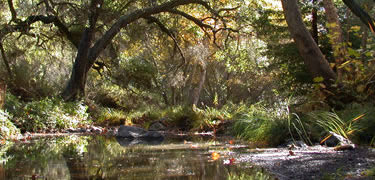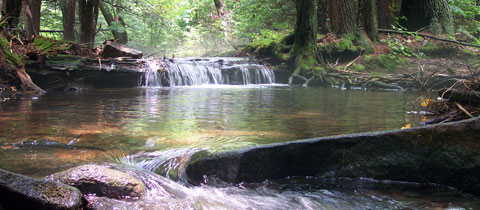On this blog, there have been many discussion of planning over different spatial scales and ownerships. In yesterday’s AP story in the San Jose Mercury News about an assessment in Southern California toward an all-lands approach.
PASADENA, Calif.—The National Park Service is beginning a lengthy study on ways to conserve corridors of wilderness around the intense urbanization of Los Angeles.
Officials suggested Friday that the outcome would likely be a proposal to Congress for collaborative management between the National Park Service, U.S. Forest Service and public-private partnerships, but property rights advocates charged that it will lead to a land-grab for a national park.
The story included this interesting (hopefully) misspelling:
Smeck said the process will include a series of meetings this summer to gather public input and identify stakeholders. Officials will determine which areas rise to national importance and study how the Park Service might fight in with existing entities doing conservation work.
A different take on the same thing showed up yesterday in the Pasadena Star
PASADENA – U.S. Forest Service officials announced Friday the beginning of a five-year study of an open space that stretches from the Santa Monica range to the San Gabriel Mountains.
The Rim of the Valley Corridor includes private and public land from the Santa Monica Mountains, Santa Susanna Mountains, San Gabriel Mountains, Verdugo Mountains and San Rafael Hills.
The Forest Service wants to bring the lands under federal protection and would study the possibilities of trail development, land acquisition and preservation of wildlife corridors that connect different sections of open space in the area.
Read more: http://www.pasadenastarnews.com/news/ci_15231347#ixzz0pzxqGQ9l
It’s interesting how the two different stories described the role of the Park Service compared to the Forest Service. The creative aspect is to take an “all lands” approach and for only $500K over 4 years, and the fact that is is not part of an NFMA process. It is also interesting that the AP story talks about “wilderness” in a kind of generic way..
“The question then became decades later, would we feel the same foresight? Would we be able to anticipate the same kind of growth in population, the same need to proactively try to preserve this incredible wilderness area?” said Schiff, whose district includes foothill communities along the wilderness areas.
So it is not particularly clear from these news stories if the assessment is for land allocations within the Forest Service land, to identify potential acquisitions and easements, to give the Park Service a larger role in collaboration, to “protect wilderness” or all of the above.

